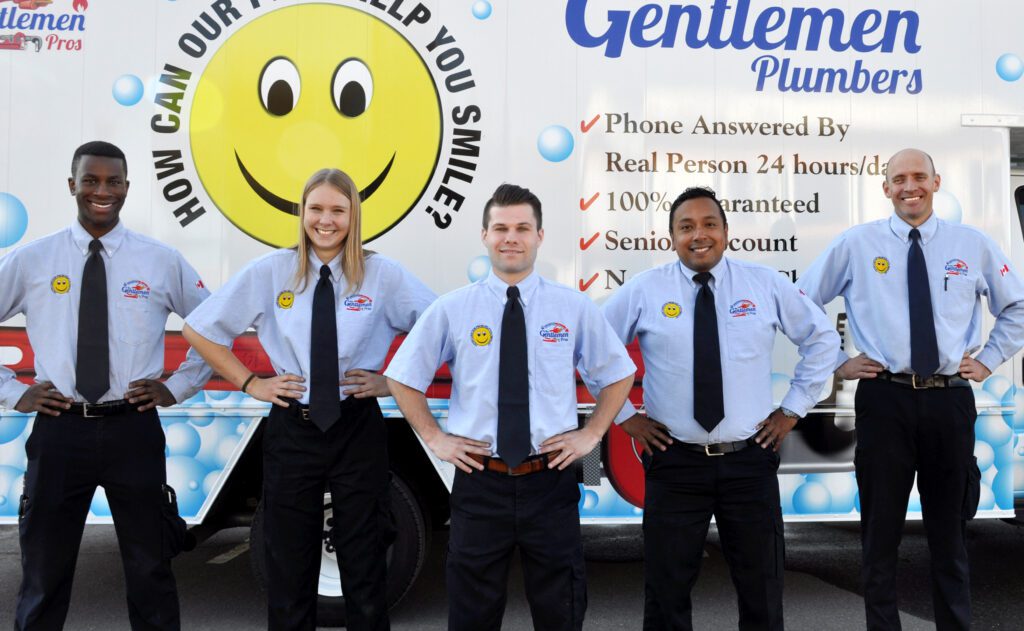
Same Day Service Since
2001
Call The Gentleman Pros Now!
(587) 786-6328
Many things can affect the price of your furnace, not just the above items.
When you install a new furnace is a great time to tackle some of the other comfort issues in your home such as improving the humidity and indoor air quality. Plus you can make sure your add-on is compatible with your furnace.
Not exactly an add-on, but if you are thinking about getting an air conditioner, this might be the time. You may be able to find discounts for purchasing the two together and you may be able to save on installation costs by installing them at the same time.
There are a few different add ons you can choose to improve your indoor air quality (IAQ).
Health Canada recommends that your home’s humidity level be between 30 and 35 percent in the winter and below 50 percent in the summer. Depending on where you live, you may need some assistance to reach these levels.
If you live in a dry climate, you may need a whole-house humidifier to add moistened air to your home to reach the recommended humidity levels.
It mounts on your furnace and provides increased humidity to the entire home. Plus the more humid the air, the warmer it feels, so you can turn down the temperature.
If you live in a humid area, you may want a whole-house dehumidifier. It does the opposite of a humidifier. It mounts to the furnace and removes excess moisture from your air, lowering your home’s humidity level.
We don’t often think about our home’s air quality but better indoor air quality can increase your comfort level. A whole-house air purifier system can improve your overall health by removing pollutants, allergens, viruses, bacteria, and mould from your home’s air.
They come in two types:
Air Filtration System
This system is installed in your ducts and using filters, it traps dust, mould, bacteria, and removes them from the air that is being circulated through your home by your furnace.
UV Air Cleaner
UV air cleaners go a step further than an air filtration system. Also called UV air disinfectors, they use ultraviolet light to kill viruses, microorganisms, and airborne bacteria or stop them from reproducing by damaging their DNA.
They can keep illnesses like the flu from spreading and they can prevent some asthma and allergy symptoms caused by pests and their droppings.
Building codes are constantly evolving and making our homes more airtight. While this has increased the overall energy efficiency of houses, it has reduced the natural flow of air into our homes resulting in staler indoor air.
Modern houses use mechanical ventilation, also called an air exchanger, in the form of either a heat recovery ventilator (HRV) or energy recovery ventilator (ERV). Both systems exchange your home’s stale air with fresh air from the outdoors.
An HRV or ERV is needed in new construction and you may have to add one to your older home if you have done energy-efficiency upgrades to your home such as adding improved insulation, improving air sealing, and installing energy-efficient windows, or doors. These upgrades are great and improve the energy efficiency of your home, but they also limit the amount of air that flows in and out of your home.
Heat Recovery Ventilator (HRV)
Energy Recovery Ventilator (ERV)
When you install your new high-efficiency furnace it is the perfect time to switch to a programmable thermostat. You can program the temperature you want for specific times of the day. Leave for work at 8:00 a.m. — program your thermostat to turn down your home’s temperature. Why heat your house if nobody’s home?
There are even motion sensor thermostats that detect the amount of movement in the home and adjust the temperature accordingly.
Many programmable thermostats are also smart home thermostats and you can control them from your mobile device.
A note of caution. Not all thermostats are compatible with all furnaces. So double-check they are before buying a new thermostat.
A normal HVAC system heats every area in your house at the same time to the same temperature. You have one thermostat and you set the temperature you want for the whole house.
A zoned system divides your house into different temperature areas each with its own thermostat. These different thermostats all connect to a central control panel.
This panel controls the temperature in each zone by moving dampers in the ducts, controlling the flow of heated air. When a zone needs to be warmer, the panel will open the dampers to that area allowing warm air to reach the zone. Once the desired temperature is reached, the control panel will close those dampers.
A properly designed and installed zoned system lets you heat only the rooms you are in and as a result, should reduce your energy usage.
If your home doesn’t currently have carbon monoxide sensors — or enough of them — the time to install them is now.
They are an important part of your home’s safety system. They detect and alert you when there are hazardous levels of carbon monoxide in your home, giving you time to vacate your home before harming you and your loved ones.
The variety of options available for your furnace is mind-boggling. It can seem confusing, but when you understand the benefits and drawbacks of the different features, you will be able to choose a furnace perfectly designed for your home.
Now to find out how much a new furnace costs.
